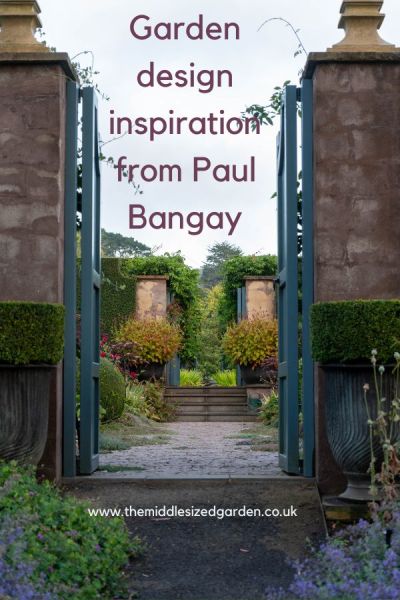Paul Bangay is a top international garden designer, and has designed gardens all over the world.
And he has described his own garden, Stonefields, as being the sum of all his ‘travels and inspirations’.
He’s now set out those inspirations in his latest book ‘Paul Bangay – A Life in Garden Design’.
He writes about his early childhood influences, the gardening books from the past that inspired him, the mentors who gave him opportunities and the travel that introduced him to new design ideas that he could adapt for his gardens. It is a story well told, rich in detail and has inspiration for us lesser gardens and gardeners too.
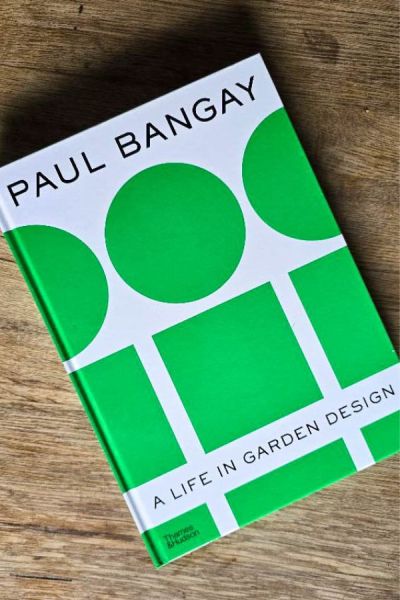
So let’s look at how inspiration translates into a beautiful garden, and ask Paul where he believes garden design is heading next.
What is now Stonefields was a cow paddock when he first set eyes on it. But he looked at the view and knew they could build a stunning house and gardens there.
And although it’s an exceptional garden, there are lessons we can learn from it.
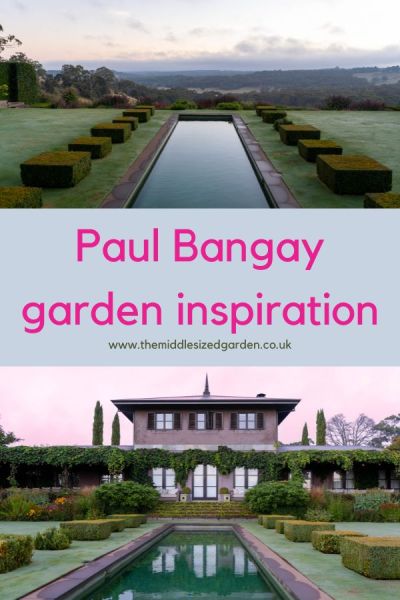
In ‘A Life In Garden’ design, Paul says that the site ‘reminded me of how the Italians create their perfectly placed and proportioned villas.’ When he first visited Stonefields he parked his car where the house now stands and realised what an amazing view a house could command. So he was strongly influenced by Italy in its design.
Garden style influences
A Life in Garden Design traces Paul’s gardening influences over his life. He quotes Vita Sackville-West, Sissinghurst and ‘English garden style’ as his earliest influence.

Paul Bangay quotes Vita Sackville-West as one of his early garden influences. The rose garden at Stonefields has an English country garden feel to it.
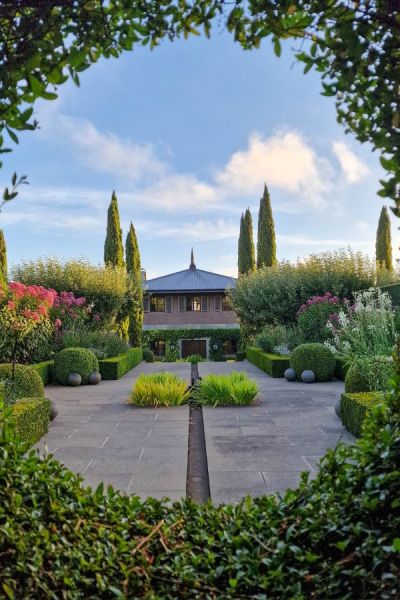
When you approach Stonefields, you see the house framed by a circle cut in a privet hedge. The central rill – a stream of water down the middle – is influenced by Iranian garden design. It’s a stunning but simple way of framing the house.

The privet spyhole is grown around an iron ring.
Create a change of pace with garden rooms
Even if you only have a small garden, it’s interesting to see how you can change the pace by dividing it into ‘garden rooms.’ Paul Bangay does this magnificently at Stonefields.
It’s also practical. Stonefield’s wonderful views are due to its position on the top of a hill. And that makes it a very windy spot.
So dividing up the garden with hedges and walls not only creates a more interesting garden. It creates a more sheltered one.
Note the contrast in atmosphere in different parts of the garden. Directly behind the house, the garden is open and formal.
On either side, there are smaller, more intimate garden rooms, planted more intensely.
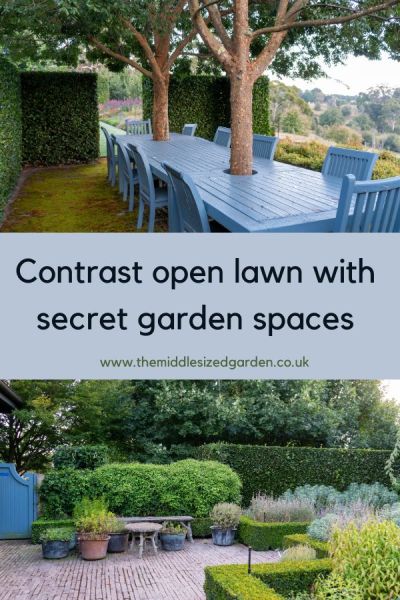
Change the pace by creating different ‘garden rooms’. You can also protect a garden from wind by dividing it up with hedges and walls.
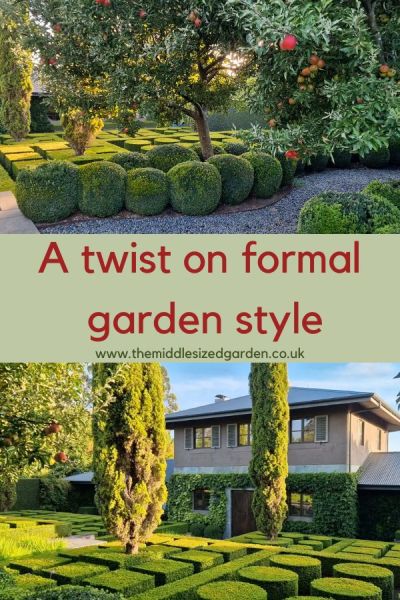
Clipped box shapes on the ‘parterre’ in front of the house. It’s a quirky interpretation of a formal garden, using simple shapes and repetition to create impact.
Design details – how to link different garden themes together
If you look at the design details at Stonefields, you can see tips we can all use in our gardens.
Although there are probably around 10 or more ‘garden rooms’, all different in character, they are unified by the use of a pretty blue paint.
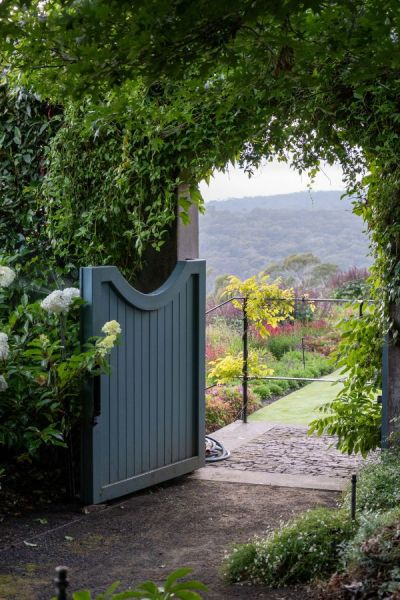
You can link different elements in a garden together by repeating a paint colour throughout. This attractive blue is used throughout the garden, visually linking a number of very different garden rooms.
The use of vistas also links the garden rooms together. When you walk from one area to another, your eye is led through by the balanced compositions of planting and gateways. You are drawn to keep exploring.
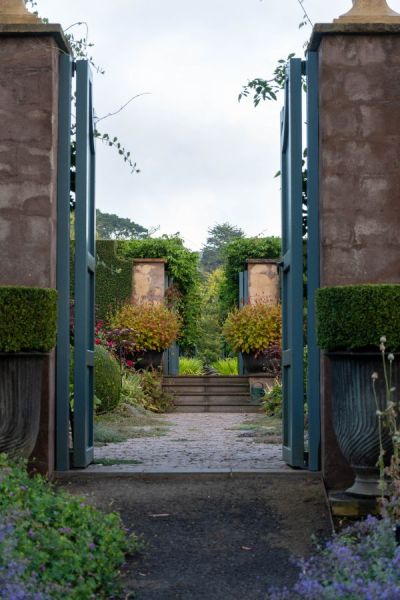
Look at the vistas at Stonefields. Paul Bangay uses pillars, gates, steps and planting to draw the eye into the next garden room. You can see that the blue paint is repeated, even though the style of these gates is quite grand compared to the wooden gate of the previous photo.
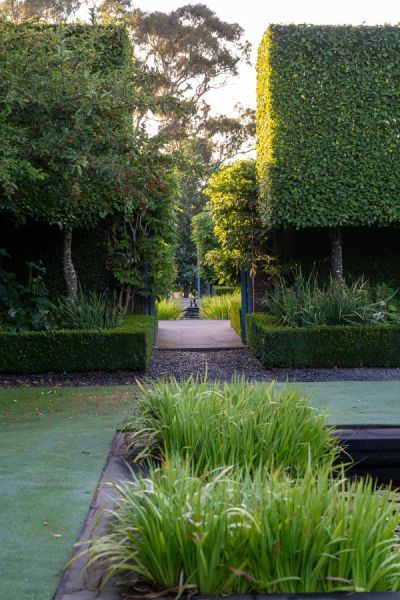
This vista leads the eye from a neat, geometric pleached hornbeam hedge onto a softer and more relaxed part of the garden. Paul Bangay is known for his mastery of balance and form in garden design.
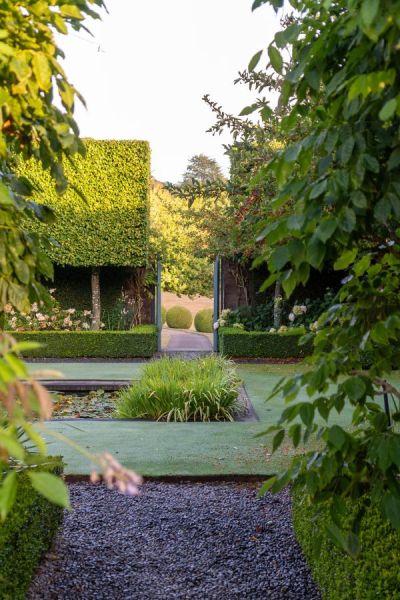
The opposite vista – the pleached hornbeam hedge with its box hedge beneath and another hedge behind goes right round this garden room and leads out onto a drive lined with box balls. You can still see the blue gates.
Connect the garden to its surroundings
Not all of us have beautiful countryside views, but it’s always worth thinking about the architectural or geographical context when you’re designing your garden.
For example, in this post Mark Walker has used his home’s position in the Victorian seaside town of Margate as a starting point for his garden. And in this post on the essentials of garden design, Catherine Heatherington reminds you to consider what kind of bricks your house is made of when you’re designing your garden.
Paul Bangay goes a step further than that! In A Life In Garden Design, he says that he chose the limewash render of the house ‘to mimic the soil. It has anchored the house to the landscape.’
He also marries the formal borders to the view. The borders are in stronger, more defined colours than the landscape. But the shapes of the planting echo the ancient eucalyptus forest beyond.
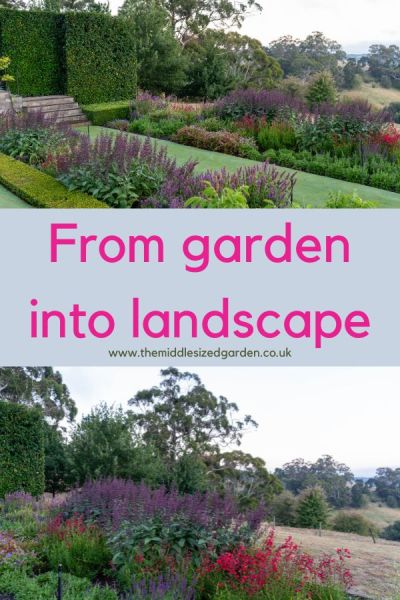
Paul created herbaceous borders that echo the soft shapes of the landscape beyond. The muted greys of the ancient eucalyptus trees are the perfect backdrop to the purples and reds of Lepechinia salviae (Chilean pitcher sage) and Penstemon ‘Firebird’.
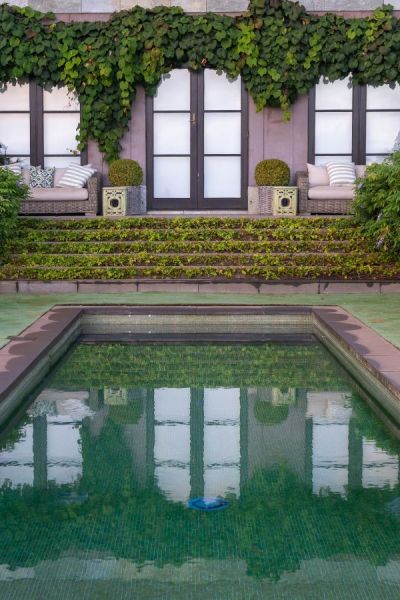
Paul chose the colour of the house to echo the colour of the soil, ‘anchoring the house to the landscape.’
The future of garden design – where to next?
At the end of A Life In Garden Design, Paul muses as to whether he should change Stonefields, but it has been described as ‘perfect’. It would be difficult to improve it, so Paul’s next garden, where he will create his next chapter in garden design is in England, in the Cotswolds.
But he believes garden design is changing. ‘We’re all seeing the effects of climate change. Australia is getting hotter and drier. The UK is getting wetter, and then drier. So we’re looking for more resilience in gardens. For me, that means planting native plants. That’s been a big new direction.’
He also says that you should be aware of ‘what the landscape requires’. That means less hard landscaping and using local or recycled materials. It’s important to make sure that gardens drain properly into the earth rather than overloading the town drains and causing flash floods.
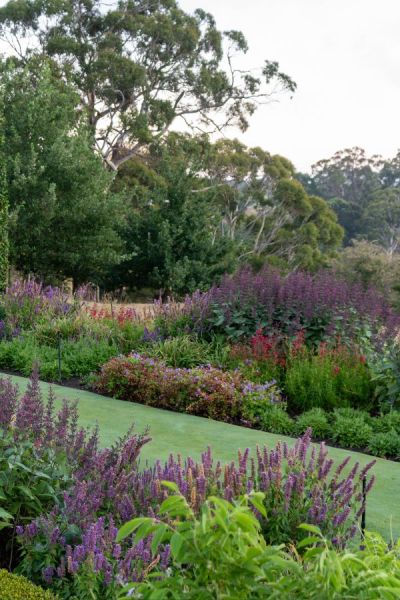
Paul thinks that softer, perennial plantings that are weather resilient and attractive to local wildlife will be a strong design direction in the future.
Pin to remember Paul Bangay and A Life in Garden Design
And do join us. See here for a free weekly email with more gardening tips, ideas and inspiration.
